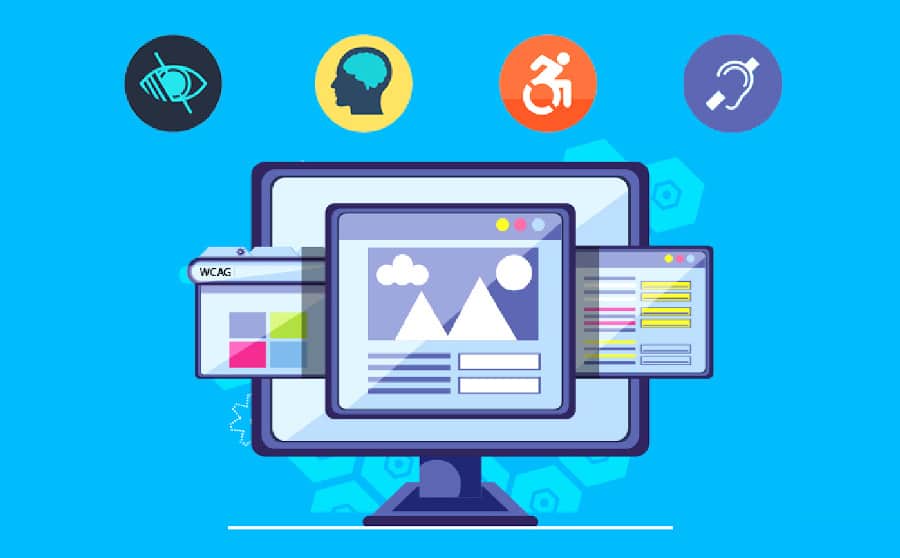Discussing the importance of Technological accessibility
Technological accessibility refers to the ability of individuals, regardless of physical to access and use technology effectively

In today's rapidly evolving world, technological accessibility has become an integral part of our daily lives. From smartphones to smart homes, from e-commerce to e-learning, technology surrounds us.
It has not only transformed the way we live but has also driven us into a new era ? the technological revolution. However, amid this revolution, one aspect that often gets overlooked is technological accessibility and inclusive design. In this blog post, we will delve into the significance of these concepts and their impact on our society.What is Technological Accessibility?Technological accessibility refers to the ability of individuals, regardless of their physical or cognitive abilities, to access and use technology effectively. It aims to break down barriers and ensure that technology is usable by everyone, including those with disabilities. Whether it's a website, a mobile app, or a piece of software, technological accessibility ensures that it is designed and developed in a way that accommodates a diverse range of users.Inclusive Design: The Key to AccessibilityInclusive design goes hand in hand with technological accessibility. It's an approach that considers the needs of all users from the very beginning of the design process. Rather than creating adaptations or accommodations for specific groups after the fact, inclusive design strives to build products and services that are accessible to the widest possible audience from the start.Now, let's explore why technological accessibility and inclusive design are of paramount importance in today's world.1. Empowering Everyone with TechnologyIn the midst of the technological revolution, it's crucial that everyone has the opportunity to benefit from cutting-edge technology. Technological accessibility ensures that individuals with disabilities can use the latest gadgets, apps, and IT services just like anyone else. This not only empowers them but also fosters a more inclusive society where everyone can participate fully.2. Tapping into the Full Potential of the WorkforceThe workforce is becoming increasingly diverse, including individuals with various abilities. To harness the full potential of this workforce, companies must ensure that their IT services and tools are accessible to all employees. By doing so, they not only comply with legal requirements but also gain a competitive edge in terms of talent acquisition and retention.3. Expanding Business OpportunitiesInclusive design can open up new markets and business opportunities. When a company's products and services are accessible to a broader audience, it can tap into previously underserved customer segments. Additionally, public perception plays a significant role, and consumers are more likely to support companies that prioritize inclusivity.4. Compliance with RegulationsGovernments and regulatory bodies are increasingly recognizing the importance of accessibility. Laws such as the Web Content Accessibility Guidelines (WCAG) are in place to ensure that digital content is accessible to everyone. Non-compliance can result in legal consequences and damage to a company's reputation.5. Achieving Sustainable Development GoalsThe United Nations' Sustainable Development Goals (SDGs) call for an inclusive and sustainable world. Technological accessibility and inclusive design directly contribute to these goals, particularly Goal 10 (Reduced Inequalities) and Goal 8 (Decent Work and Economic Growth). By ensuring that technology is accessible to all, we move closer to achieving these global objectives.6. Enhancing User Experience for EveryoneInclusive design not only benefits individuals with disabilities but also improves the overall user experience for everyone. Consider the curb cut as an example. Originally designed to assist people with wheelchairs, curb cuts are now used by countless individuals, from parents with strollers to travelers with luggage. Similarly, inclusive design in technology often leads to innovations that benefit a broader audience.7. Staying Ahead of the CompetitionIn a world driven by innovation, companies that prioritize technological accessibility and inclusive design gain a competitive advantage. They are more likely to create products that resonate with a diverse customer base, and they are better prepared to adapt to changing demographics and user preferences.Worldwide Technological Accessibility (WWT): A Global InitiativeIn the spirit of advancing technological accessibility and inclusive design, initiatives like "Worldwide Technological Accessibility" (WWT) have emerged. These global efforts aim to raise awareness, provide resources, and promote best practices in making technology accessible to everyone.Viva Technology: A Showcase of Inclusive InnovationEvents like "Viva Technology" serve as platforms to showcase inclusive innovation. Viva Technology brings together leading technology companies, startups, and thought leaders to explore the latest trends in technology. It's an opportunity to highlight the importance of accessibility and inclusive design in the tech industry.In conclusion, technological accessibility and inclusive design are not mere afterthoughts; they are integral components of the technological revolution. They empower individuals, open doors to new business opportunities, and help us move closer to achieving global goals for inclusivity and sustainability. As we continue to embrace cutting-edge technology, let us do so with the understanding that it should be accessible to all, leaving no one behind in this exciting journey into the future. By prioritizing accessibility and inclusive design, we can build a more equitable and innovative world for everyone.
What's Your Reaction?

















